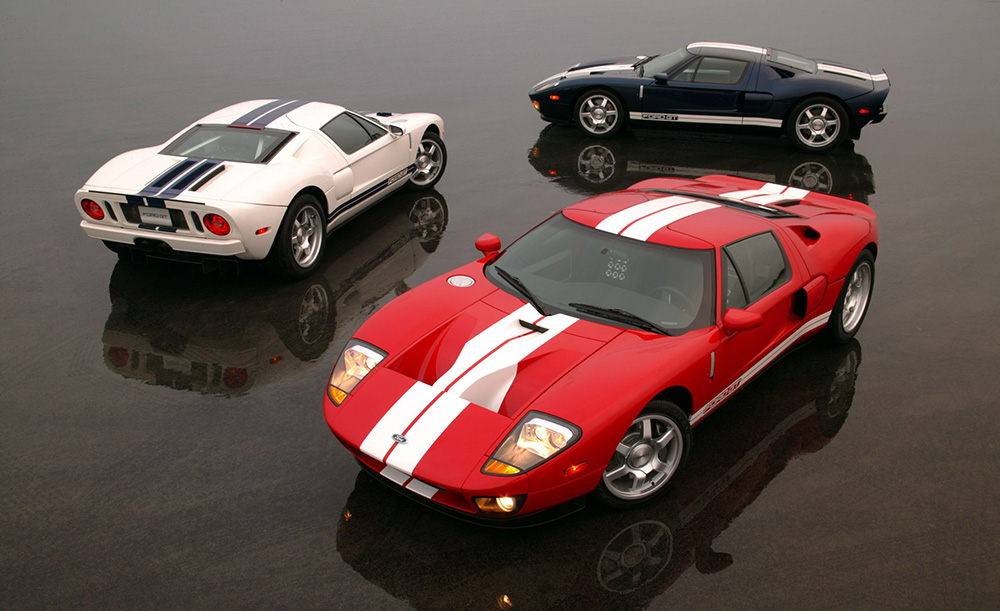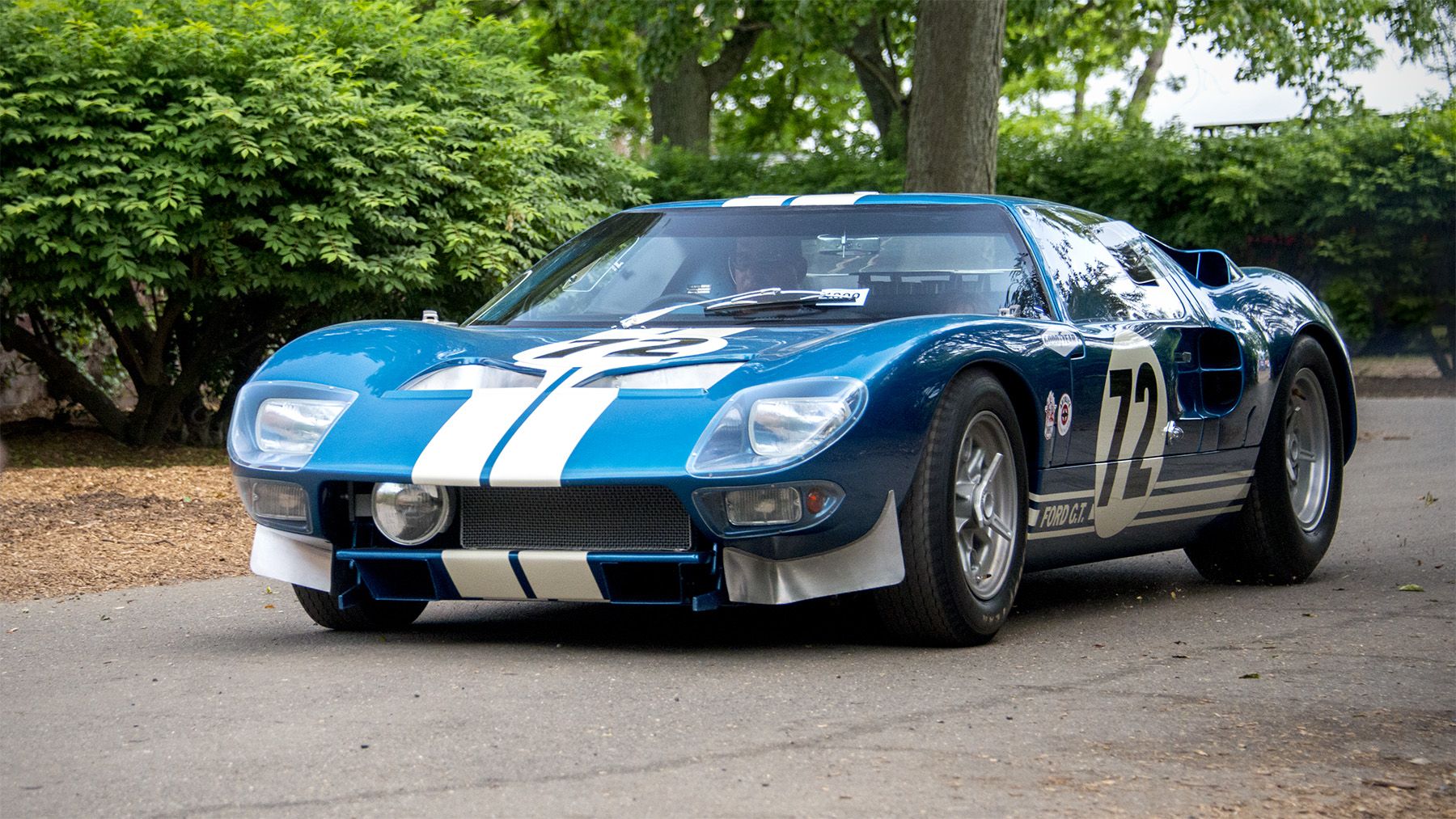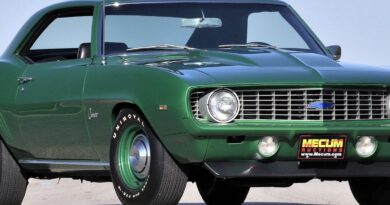
The Amazing History Of Ford’s Greatest Supercar
It’s been six years since Ford stopped making the GT, and forty four since they last won at Le Mans with a car so low most of us wouldn’t even fit in it. The original British-American GT40 racecar was good enough to kick Ferrari’s ass thanks to Carroll Shelby’s ideas, while the modern version was not only a brave answer to the question of an American supercar, but had also proven itself on the racetracks in GT1 and GT3 tunes. Carroll Shelby helped Ford with that as well.
Let’s go from 1963 ’till last year, or Lola to Hennessey, if you will.
Lola Mk6

Developed by Lola at their new factory in Slough, the Mk6 wasn’t Lola’s most successful racer. It made it on foot to Le Mans in 1963 where it revved out due to low-gearing on the Mulsanne Straight, then crashed. But since it was using a Ford V8, that was good enough for the Americans to contract them for their urgent Le Mans project instead of the declining Cooper team.
That was especially helpful after Colin Chapman’s polite refusal. Lotus was way over its head at the time, while Henry Ford II really wanted to get back at Enzo Ferrari for cutting off a deal he already had spent millions on to take over Ferrari, which was dominating in Le Mans between 1960-65
Ford GT40 Mk1

Since Lola had its own Le Mans team, Eric Broadley only agreed on a short-term collaboration, which meant only two Mk6 chassis were given to Ford. They hired Aston Martin’s ex-team manager John Wyer, and sent Roy Lunn to England as well, as he was the only engineer at the company who had any experience with mid-engined cars, after making the Mustang I concept in 1962. Ford then established Ford Advanced Vehicles Ltd. After the first chassis was finished at Abbey Panels of Coventry, the GT/101 (the «40» was only a nickname at the time due to its height) was exhibited in New York, before being taken to the Nürburgring 1000 km in May, 1964. You can see Bruce McLaren and Phil Hill standing next to it in the pits. It retired with suspension failure.
Photo Credit: Ford Motor Company
Shelby Ford GT40

After all three GT40s retired at the 1964 24 Hours of Le Mans, Ford decided to let John Wyer go just after the Nassau race. The team was handed over to Carroll Shelby, with the cars being shipped to Texas without being cleaned from the dirt of the race. Shelby wasn’t happy about that, but he got Ford a win at the car’s maiden race: Ken Miles and Lloyd Ruby drove the Shelby to victory at the Daytona Continental 2000 km. Finally, Henry Ford II had a very good reason to smile. Back at home, the new Mustang wasn’t doing bad either…
Photo credit: Ford Motor Company
MkII: Hammertime

The rest of 1965 was a disaster, but the experience they gained led to success the next year. The GT40 MkII was ready with its crazy exhaust pipes connected to a 7 litre V8. It was so powerful that it turned team mates into dangerous kamikazes, so the boss had to interfere with a hammer at the Sebring 12 Hour Race. Four people died there that day, but the race didn’t stop for a second. The MkII scored Ford its first Le Mans 1-2-3 victory, but happiness was overshadowed. Bruce McLaren and Chris Amon were so close to the leading car driven by Ken Miles and Denny Hulme that Ford asked them to play it safe and cross the finish line at the same time instead of crashing into each other. But since the McLaren car started 18 meters behind Miles’s GT40, it would have covered more distance, making the photo finish useless. Since Miles was very dedicated to the program, he felt so bad about Ford’s decision that he slowed down just before the finish. He died two month later while testing the experimental «J-car» which later become the MkIV.
The champagne wasters
After Miles’s death, the J-car was completely redesigned. The flat-topped «bread van» idea was ditched since the car needed more downforce in order to stay stable at the much higher (almost 220 mph) top speed. At 2,660 lb, the new MkIV weighted 300 lb less than the MkII (the MkIII was a road car only). Ten GT40s arrived at Le Mans, four of which were MkIVs. The 7 litre engine from the Ford Galaxie remained, and together with the low-drag body, Ford took the trophy once again, making Ferrari very angry indeed. A. J. Foyt and Dan Gurney won the race in front of two Ferrari 330 P4s, making them the first (and so far only) Americans to do so. Gurney needed a special bubble roof in order to fit in the car, which he thanked not only by winning, but also by inventing the whole champagne-spraying ritual. The show must go on, right?
Photo credit: Getty Images
Back to the roots
The high speeds achieved in 1967 resulted in new rules for the next year, so the size of the engines was limited to three litres, just like in Formula-1. This took out the Ferrari 330P, but an exception was made for cars of which at least fifty were made. Enzo Ferrari decided not to race in 1968 even with a 3-litre F1 engine in his garage, while Ford had to use the old MkI. Shelby stepped down to give space to John Wyer once again, who used some tricks from his Mirage M1 race car on the GT40 as well. They bored the 4.7 to 4.9 litres, and installed o-rings between the deck and head to prevent head gasket failure, which was a common problem with the original engine. The race was close, with only one Mk1 standing in the end out of the four starters. But that was the winning car with Pedro Rodriguez and Lucien Bianchi behind the wheel, who beat Porsche’s 907 and 908 racers by only one lap.
Photo credit: Ford Motor Company
394 feet
Ferrari was back in 1969, while Porsche spent almost all if its cash on the development of the 917, which came with the firm’s first twelve-cylinder engine, and all the titanium, magnesium and exotic alloys they could find around Stuttgart. During the race, the two factory 917s were stopped by clutch bell housing problems, but the third car’s private driver wasn’t that lucky. John Woolfe crashed and died on lap one at Maison Blanche. He didn’t use his seat belt, probably due to the traditional Le Mans start, when drivers had to run and start their cars as fast as they could in order to pull away from the grid. The later winner, Jacky Ickx protested against this habit by walking slowly to his car at the start. That was a pretty generous gesture, considering that he could only beat the flat-eight powered Porsche 908 of Hans Herrmann by 394 feet. He got lucky, since the Porsche had brake problems, but at that point, it became clear that the GT40 was outdated forever. Porsche was unbeatable in the seventies.
Photo credit: Ford Motor Company
Replicas
Building a GT40 wasn’t rocket science, so privateers continued after Ford left the scene. British Safir Engineering got the rights and the blueprints, while in America, Superformance built a continuation of the MkII under license. They updated the interior with a hidden air conditioner and put modern brakes on, but the core of the design remained the same. Several other companies made kit cars and replicas, and while the quality of these cars varied quite a lot, some were probably better than the original. Seeing one on the street is quite an experience.
GT90

Ford spent $3 million on the development of the GT90, but it was worth it, as it became the shining star of the 1995 Detroit Auto Show. Ford described it as a technological test bed for future products, and while the show car had tires with «GT90» carved directly into the tread and remote controlled doors, it was also a fully functional prototype. Power came from a 48-valve six-liter V12 with four Garrett T2 turbochargers (two Lincoln V8s with the last cylinders cut off, then welded together), producing 720 horsepower. The all around double wishbone suspension and the FFD-Ricardo five-speed manual came from the mighty Jaguar XJ220, while the body was made of carbon fiber, using Ford’s brand new «Edge» design language. They needed space shuttle style tiles to protect it from the heat of the engine…
Workhorse 1
In 2002, Ford unveiled the GT40 Concept. The public and the press loved it, so there was no question about going forward. Ford continued «Project Petunia», now with the help of Carroll Shelby himself. The first prototype was called Workforce 1, and legend has it that «several of the Ford GT engineering team members led by Kip Ewing and Rich Rinke took the flat black fiberglass body panels home and for several nights sanded and painted it until the early morning hours.» The result is an exterior that pays homage to the 1967 GT40 Shelby all-American team victory at Le Mans by champagne wasters Dan Gurney and A.J. Foyt.
Photo credit: Ford Motor Company
Ford GT

Built to celebrate the 100th Anniversary of Ford Motor Company and the 40th Anniversary of Ford’s legendary GT40 winning streak at the 24 Hours of Le Mans, the new car was 3 inches taller compared to the original, so the GT43 name was also under consideration, especially after Ford couldn’t buy back the GT40 trademark from Safir Engineering. While the assembly started at Mayflower Vehicle Systems in Norwalk, the cars were painted by Saleen in Troy, with the engine and manual transmission along with interior finishing being done in the SVT building at Ford’s Wixom plant. Retired Microsoft Executive Jon Shirley got the first car after outbidding other suitors at the Pebble Beach Concours d’Elegance. 4,038 GTs were produced between 2004 and 2006.
The GT is cool
It looked great, and had a 550 hp supercharged V8, but Jeremy Clarkson still didn’t like his GT. On the other hand, Jay Leno approved. We trust Jay on this one…
The GTX1 is even cooler

Ford made two roadster prototypes of the original car, one of which won the 12 Hours of Sebring in 1966, so it was only natural to do something similar with the new kid. The GTX1 was made for SEMA 2005 from the #2 coupe by Kip Ewing, and could be configured as a coupe, t-top, or full convertible. It was also lowered, and got 150 extra horsepower. While Ford didn’t put it into production, they directed any GT owners lusting for the open top experience to Genaddi for the official roadster conversion. As always, the orange prototype remains the most valuable.
Lower, wider and faster
While the critics main point was that the modern GT is nothing but a bloated shadow of the original, I respectfully disagree. In my eyes, the GT was a road car as close to the original as possible, which could also be turned into a serious racer in no time in the right hands. Ford GTs were all over the tracks is both GT1 and GT3 forms, and even made it to the Japanese Super GT class, powered by a 3.5-litre Cosworth engine straight out of a 90s F1 car. That was pretty badass.
Insane in the membrane
During the development of the car that does 0-to-186 mph in 13.63 seconds, John Hennessey also had time to make Ford GTs do 263.3 miles per hour. That doesn’t only prove that the Texan is probably a bit on the crazy side, but also shows how bulletproof the GT’s design is.


